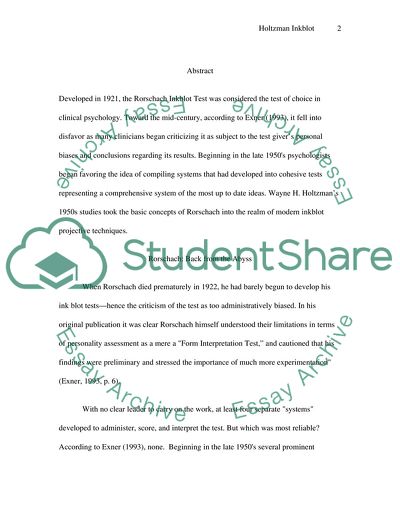Cite this document
(“Standardized Personality Intelligence Test: Holtzman Inkblot Research Paper”, n.d.)
Standardized Personality Intelligence Test: Holtzman Inkblot Research Paper. Retrieved from https://studentshare.org/psychology/1739911-standardized-personality-intelligence-test
Standardized Personality Intelligence Test: Holtzman Inkblot Research Paper. Retrieved from https://studentshare.org/psychology/1739911-standardized-personality-intelligence-test
(Standardized Personality Intelligence Test: Holtzman Inkblot Research Paper)
Standardized Personality Intelligence Test: Holtzman Inkblot Research Paper. https://studentshare.org/psychology/1739911-standardized-personality-intelligence-test.
Standardized Personality Intelligence Test: Holtzman Inkblot Research Paper. https://studentshare.org/psychology/1739911-standardized-personality-intelligence-test.
“Standardized Personality Intelligence Test: Holtzman Inkblot Research Paper”, n.d. https://studentshare.org/psychology/1739911-standardized-personality-intelligence-test.


